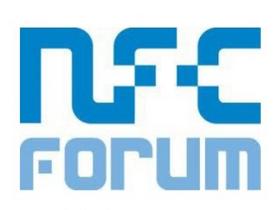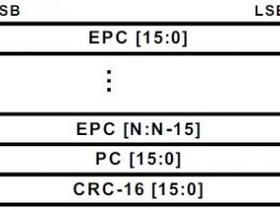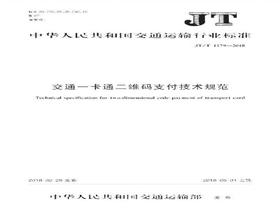1、 Introduction to Contactless IC Card
Contactless IC card, also known as RF card, is an organic combination of RFID technology and IC card technology. It solves the problem of passive (no power supply in the card) and contactless, and is more convenient and fast. It is widely used in electronic payment, channel control, bus tolling, parking tolling, canteen meal selling, attendance and access control and other occasions. Compared with bar code card, magnetic card and contact type IC card, non-contact IC card has high security, high reliability and convenient use. This is mainly determined by its technical characteristics. The main standard to be followed in close coupled applications is ISO/IEC14443. The article originates from the fallen fish- https://www.duoluodeyu.com/2537.html
2、 Introduction to ISO/IEC14443
ISO/IEC14443 specifies the physical characteristics of the proximity card (PICC); The properties and characteristics of the fields that need to supply energy, and the two-way communication between adjacent coupled devices (PCDs) and adjacent cards (PICCs); (PICCs) when the card enters the adjacent coupled devices (PCDs), the character format, frame structure and timing information in the communication initialization phase; The contactless half duplex block transmission protocol defines the steps to activate and stop the protocol. The transmission protocol applies to both TYPEA and TYPEB. The main difference between TYPEA and TYPEB cards lies in the carrier modulation depth, the encoding method of binary numbers and the anti-collision mechanism. The article originates from the fallen fish- https://www.duoluodeyu.com/2537.html
1. Modulation, demodulation, coding and decoding technology: The article originates from the fallen fish- https://www.duoluodeyu.com/2537.html
ISO/IEC14443-3 defines TYPEA and TYPEB card types according to different signal transmission and reception modes. Their differences mainly lie in the modulation depth of the carrier and the encoding method of the binary number. When signals are transmitted from PCD to PICC, they are transmitted through 13.56Mhz RF carrier. When transmitting signals from PICC to PCD, both transmit signals through modulation carrier, and the subcarrier frequency is 847KHz. The article originates from the fallen fish- https://www.duoluodeyu.com/2537.html
When the TypeA card transmits signals to the card on the reader writer, it transmits signals through 13.65MHz RF carrier. The scheme is synchronous and improved Miller encoding, which is transmitted through 100% ASK; When the card transmits a signal to the read/write tool, it transmits the signal through the modulation carrier. Use 847kHz subcarrier to transmit Manchester code. In brief, when the information is "1", the signal will have a 0.3 subtle gap. When the information is "0", the signal may or may not have a gap, which is related to the front and rear information. The advantages of this method are obvious information difference, less chance of interference, fast response speed and no easy misoperation; The disadvantage is that the energy may fluctuate when it needs to continuously improve the energy to the non-contact card. The article originates from the fallen fish- https://www.duoluodeyu.com/2537.html
When the TypeB card transmits signals to the card from the read-write machine, it also transmits the signals through 13.65MHz radio frequency carrier signals, but it uses asynchronous, NRZ encoding, and 10% ASK transmission scheme; When the card transmits signals to the read/write machine, the BPSK code is used for modulation. That is, the difference between information "1" and information "0" is that the signal amplitude of information "1" is large, that is, the signal is strong, while the signal amplitude of information "0" is small, that is, the signal is weak. The advantage of this method is continuous signal transmission without energy fluctuation; The article originates from the fallen fish- https://www.duoluodeyu.com/2537.html
The main difference of communication signal interface from PCD to PICC is signal modulation. TYPEA modulation uses ASK100% modulation principle of RF workplace to generate a "pause" state for communication between PCD and PICC. The article originates from the fallen fish- https://www.duoluodeyu.com/2537.html
TYPEB modulation uses ASK10% amplitude modulation of RF workplace for communication between PCD and PICC. Modulation index shall be 8% minimum and 14% maximum. The article originates from the fallen fish- https://www.duoluodeyu.com/2537.html
According to their different design schemes, TYPEA and TYPEB have the following differences: The article originates from the fallen fish- https://www.duoluodeyu.com/2537.html
◆ When receiving signals, TYPEB will not stop the internal logic and software work of the chip due to energy loss. When NPAUSE comes, TYPEA's chip can't get the clock, while TYPEB uses 10% ASK, and the card can get continuous energy from the reader writer; TYPEB is easy to stabilize voltage, so it is safe and reliable. TYPEA card adopts 100% modulation mode. When modulation occurs, there is no energy transmission, and it is only maintained by the internal capacitance of the card. Therefore, the communication of the card must reach a certain rate, and the modulation will be ended before the capacitance power is consumed, otherwise the card will reset. The article originates from the fallen fish- https://www.duoluodeyu.com/2537.html
◆ BPSK modulation technology is adopted for load wave. Compared with TYPEA scheme, TYPEB reduces signal noise by 6dB and has stronger anti-interference ability. The article originates from the fallen fish- https://www.duoluodeyu.com/2537.html
◆ Simple peripheral circuit design. NRZ scheme is adopted for the encoding mode from the read-write machine to the card and from the card to the read-write machine. The circuit design is symmetrical. Simple UARTS can be used in the design, and TYPEB is easier to realize. The article originates from the fallen fish- https://www.duoluodeyu.com/2537.html
2. Anti conflict mechanism: The article originates from the fallen fish- https://www.duoluodeyu.com/2537.html
ISO/IEC14443-3 specifies the anti-collision mechanism of TYPEA and TYPEB. The principles of the two conflict prevention mechanisms are completely different. The former is based on BIT conflict detection protocol, while the latter completes conflict prevention through bytes, frames and commands. The core of RFID is anti-collision technology, which is also the main difference between RFID and contact IC card. TYPEA PICC anti-collision and communication uses standard frames for data exchange and is composed in the following order: The article originates from the fallen fish- https://www.duoluodeyu.com/2537.html
- Communication start; The article originates from the fallen fish- https://www.duoluodeyu.com/2537.html
- n * (8 data bits+odd parity bits), n ≥ 1. The LSB of each byte is sent first. Each byte is followed by an odd parity bit. The parity bit P is set so that the number of 1s in (b1 to b8, P) is odd; The article originates from the fallen fish- https://www.duoluodeyu.com/2537.html
- End of communication. The article originates from the fallen fish- https://www.duoluodeyu.com/2537.html
The initialization and bit conflict detection protocol of TYPEA PICC is that when at least two PICCs simultaneously transmit a bit mode with one or more bit positions (at least two PICCs in this position are transmitting supplementary values), PCD will detect conflicts. In this case, the bit patterns are combined, and the carrier is modulated with a negative carrier for the entire (100%) bit duration. The article originates from the fallen fish- https://www.duoluodeyu.com/2537.html
Format of bytes, frames and commands used during TYPEB PICC anti-collision and communication initialization. Bytes between PICC and PCD are sent and received through characters. During the anti-collision sequence, the character format is as follows: The article originates from the fallen fish- https://www.duoluodeyu.com/2537.html
- 1 logical "0" start bit; The article originates from the fallen fish- https://www.duoluodeyu.com/2537.html
- Send 8 data bits, first send LSB; The article originates from the fallen fish- https://www.duoluodeyu.com/2537.html
- 1 logic "1" stop bit. The article originates from the fallen fish- https://www.duoluodeyu.com/2537.html
It takes 10 etus to send a byte with one character. The article originates from the fallen fish- https://www.duoluodeyu.com/2537.html
PCD and PICC send characters by frame. Frames are usually delimited by SOF (start of frame) and EOF (end of frame). The article originates from the fallen fish- https://www.duoluodeyu.com/2537.html
During the conflict prevention sequence, two or more PICCs may respond simultaneously: this is conflict. Command set and allow PCD to handle conflict sequence so as to separate PICC transmission in time. The article originates from the fallen fish- https://www.duoluodeyu.com/2537.html
After completing the anti-collision sequence, PICC communication will be completely under the control of PCD, and only one PICC communication is allowed at a time. The article originates from the fallen fish- https://www.duoluodeyu.com/2537.html
The anti-collision scheme is based on the definition of the time slot and requires PICC to respond with the minimum identification data in the time slot. The number of time slots is parameterized, ranging from 1 to an integer. In each time slot, the probability of PICC response is also controllable. In the anti-collision sequence, PICC is only allowed to answer once. Thus, even if there are multiple cards in the PCD field, there is only one card response in a time slot, and the PCD can capture identification data in this time slot. According to the identification data, PCD can establish a communication channel with the identified card. The article originates from the fallen fish- https://www.duoluodeyu.com/2537.html
The anti-collision sequence allows one or more PICCs to be selected for further communication at any time. The article originates from the fallen fish- https://www.duoluodeyu.com/2537.html
Compare from the aspect of establishing communication between PCD and PICC (CPU card): The article originates from the fallen fish- https://www.duoluodeyu.com/2537.html
The basic commands required for TYPEA cards are: The article originates from the fallen fish- https://www.duoluodeyu.com/2537.html
REQUEST FROM REQA FOR A TYPE CARD OR (WAKE-UP Wakeup) The article originates from the fallen fish- https://www.duoluodeyu.com/2537.html
ANTICOLLISION The article originates from the fallen fish- https://www.duoluodeyu.com/2537.html
SELECT command The article originates from the fallen fish- https://www.duoluodeyu.com/2537.html
RATS response The article originates from the fallen fish- https://www.duoluodeyu.com/2537.html
The basic commands required for TYPEB cards are: The article originates from the fallen fish- https://www.duoluodeyu.com/2537.html
REQB's request for B-card The article originates from the fallen fish- https://www.duoluodeyu.com/2537.html
ATTRIBPICC selection command The article originates from the fallen fish- https://www.duoluodeyu.com/2537.html
From the above comparison, we can see that: The article originates from the fallen fish- https://www.duoluodeyu.com/2537.html
TYPEB cards have the ability to use fewer commands and respond faster to prevent conflicts and select cards. The article originates from the fallen fish- https://www.duoluodeyu.com/2537.html
The anti-collision of TYPEA requires a higher and more accurate timing on the card, so more hardware needs to be added to the card and the reader writer, and the anti-collision of TYPEB is easier to achieve. The article originates from the fallen fish- https://www.duoluodeyu.com/2537.html
At present, the advantages and disadvantages of TYPEA and TYPEB are still in dispute. TYPEA products (Mifare cards) have higher market penetration; However, TYPEB should have better prospects in terms of security, high-speed and adaptability, representing products such as second-generation identity cards. The article originates from the fallen fish- https://www.duoluodeyu.com/2537.html



